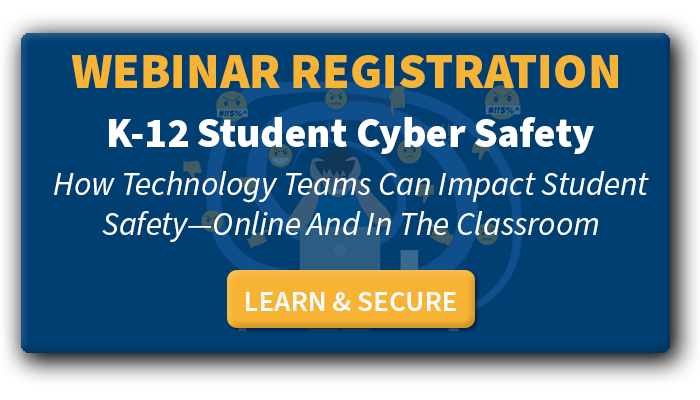Cyberbullies, and those being bullied, need help from IT staff & administrators
A recent study found that 36.5% of people feel that they’ve been cyberbullied at some point in their lives, while 17.4% reported being the victims of cyberbullying within 30 days of the survey.
Cyberbullying has long been a problem for schools across the country. Today, bullying is worse because students spend more time than ever online. While remote learning and social distancing efforts continue, students find social media and other online communities are the only places where they can socialize, which makes them even more vulnerable.
Cyberbullying detection in school technology is not a new concept. Many districts use these cyber safety technology options to help flag potential problems. Here we’ll take a look at why it’s so important for schools to use cyberbullying detection in school technology for the health, safety, and wellbeing of their students.
The Effects that Cyberbullying Has on Students
The effects that cyberbullying has on students are significant and last a long time, both for the students who do the bullying and those who are being bullied.
The students doing the cyberbullying have problems that need to be addressed. Cyberbullies may lack empathy or they may be jealous of other students and don’t know how to deal with that emotion. They may be trying to fit in with the crowd, or they know that cyberbullying will get them the attention they crave. For school districts, the most significant motivation is that cyberbullies think that the internet is anonymous, and they don’t think they’ll get caught.
The Cyberbullying Research Center reports that 64% of students who have been cyberbullied say it affects their ability to learn and feel safe in school. Another study, conducted by Ditch the Label, found that students develop severe mental health issues because of being cyberbullied. These issues include:
- Developing social anxiety (41%)
- Developing depression (37%)
- Having suicidal thoughts (26%)
- Engaging in self-harm (25%)
- Skipping classes (20%)
- Developing an eating disorder (14%)
- Abusing drugs and alcohol (9%)
Cyberbullying is a critical problem that affects a student’s ability to learn and often results in long-term mental health issues that are difficult to resolve. The fact that cyberbullying is happening in school environments is simply unacceptable. Implementing cyberbullying detection in school technology needs to be a top priority for district IT leaders.
Cyberbullying Detection in School Technology
When considering cyberbullying detection solutions for your schools, there are a few factors to consider.
Many districts already use an extension-based K-12 cyber safety solution such as Gaggle or GoGuardian. Admins can push these solutions out to school devices—particularly Chromebooks—with ease. The solutions can also be “force installed” on devices before that device accesses school cloud applications, such as Google Workspace or Microsoft 365. As a result, admins are comforted by the fact that students are secured no matter what device they are on.
ManagedMethods provides an API-based cybersecurity and cyberbullying detection solution as part of its cyber safety and security platform. ManagedMethods is not a content filter. It monitors all user behavior within district Google and/or Microsoft 365 domains—no matter what device the student is using nor what network they are using to access the apps. It can help with student self-harm detection, self-harm monitoring, student suicide prevention, and more.
What we’ve discovered is that when districts use ManagedMethods in conjunction with other cyberbullying detection technologies, they report getting more useful data from ManagedMethods. When admins receive an alert, they can:
- Audit the user and/or content metadata activity to find the person who created the content
- Determine who the content was shared with and/or downloaded by
- Determine who contributed to the content, as well as who didn’t
Admins can easily download a report with all this information and send it to student resources such as school principals and counselors. Alternatively, they can automate the process and delegate all of it to their student resource staff members.
Whatever cyberbullying detection solution your district uses, the most important thing is to keep students safe. The impacts of toxic online behavior and cyberbullying continue to create mental, emotional, and physical risks for our children. We must do all that we can to detect and limit this behavior so that students can learn how to become good citizens of a (hopefully) kinder future society.

![[FREE WEBINAR] Student Cyber Safety in Schools. REGISTER HERE >>](https://no-cache.hubspot.com/cta/default/6834707/5cd0a157-352c-458b-9676-0ad9bb75645a.png)
